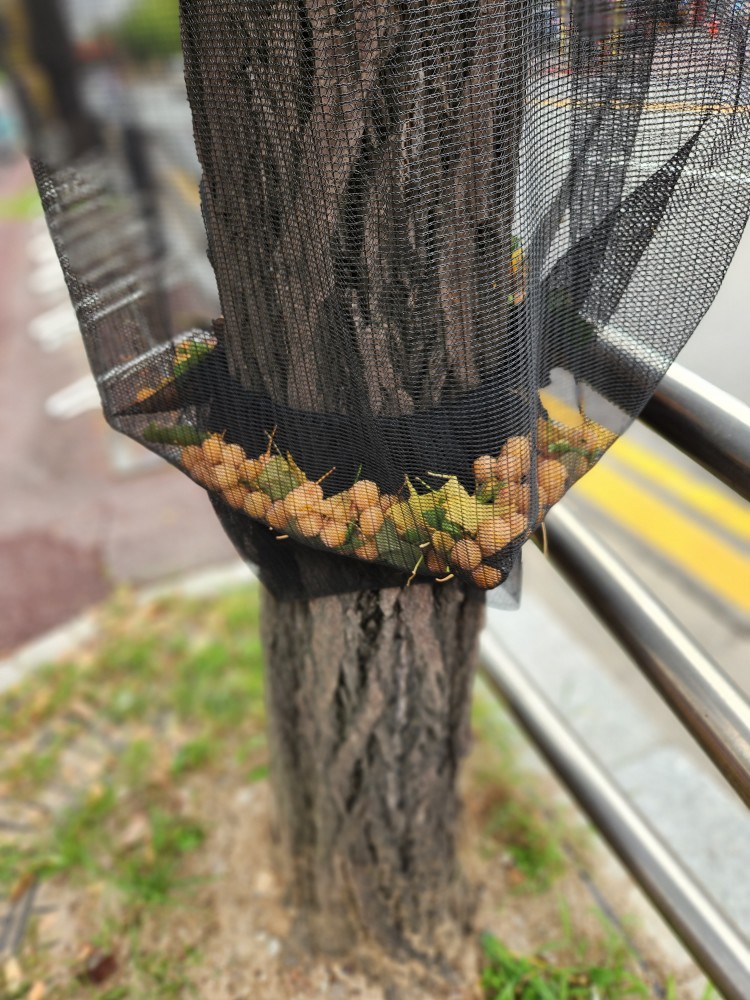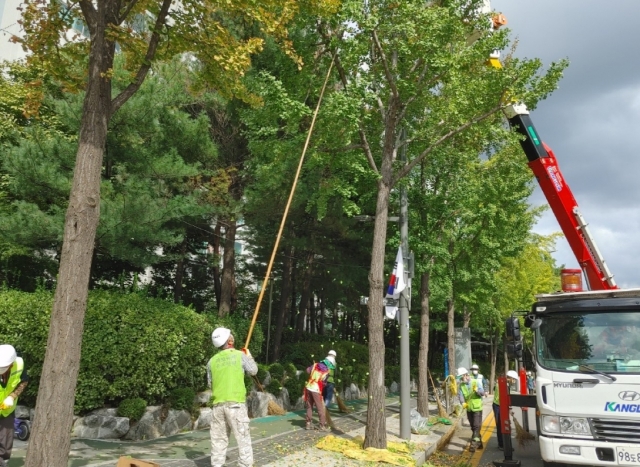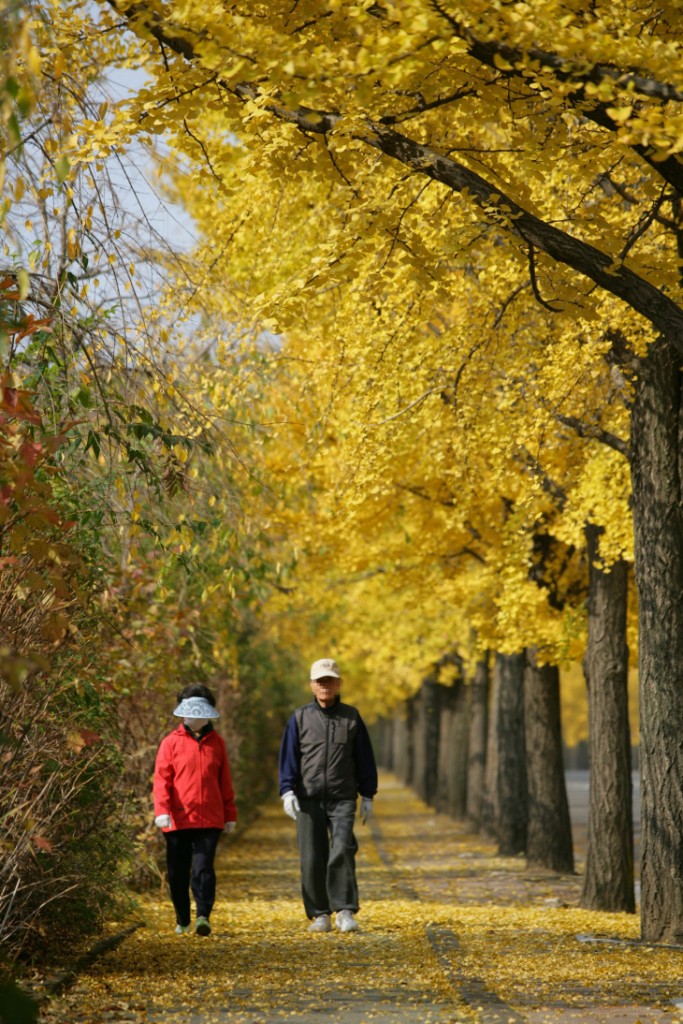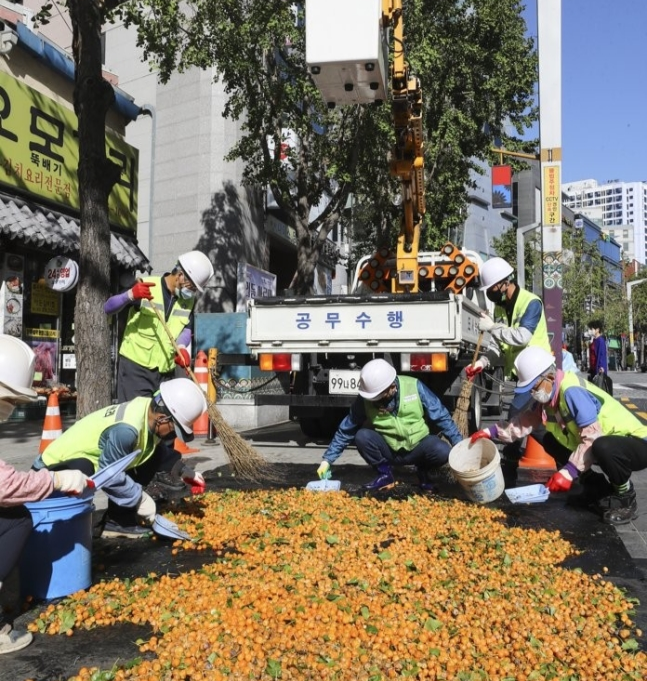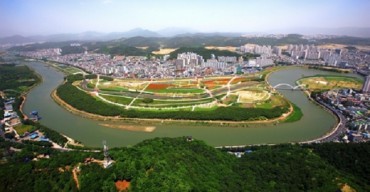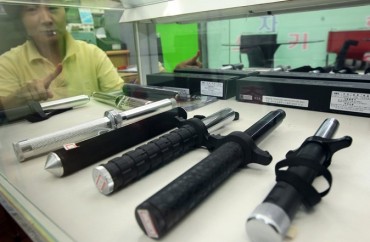SEOUL & Other Cities, Sept. 19 (Korea Bizwire) –- When we think about the fall season, the first thing that comes to mind is the leaves on the streets turning yellow and red. One tree called Ginkgo biloba, which makes the streets turn yellow, is planted all over the country. People plant it not just because it has beautiful leaves but also because it can survive against bugs and other pests.
Ginkgo trees are really good at living in cities with lots of pollution, like smog, and they can clean up the air and soil by removing pollutants. So, they’re perfect for lining the streets. However, there’s a big problem with ginkgo trees: they produce fruit that smells really bad.
The awful smell comes from the outer skin of the fruit, which is the tree’s way of defending itself. Especially when it’s hot outside, the fruit ripens early, so local governments are trying to figure out how to collect it in different ways.
A single ginkgo tree usually makes about 60 kilograms of fruit, and people are finding new ways to pick it. One of the most popular methods is to hang a net that looks like an upside-down umbrella on the tree and catch the falling fruit. Vibratory harvesters, which shake the tree to make the fruit fall, are also useful. These methods help collect the fruit before it starts stinking.
Ginkgo trees have male and female versions, and it takes at least 15 years for them to show which one they are. So, you can’t pick and plant them ahead of time. In Seoul, one out of every four ginkgo trees planted on the streets is a female tree.
Ginkgo fruit doesn’t get spread around by animals, and it doesn’t naturally spread much on its own because the fruit is heavy. In the wild, there are very few ginkgo trees that grow without people’s help, and because of this, they’re considered endangered by the International Union for Conservation of Nature (IUCN).
Image credit: City of Seoul, City of Incheon, Gwacheon-si, Cheolsan-dong in Gwangmyeong-si / photonews@koreabizwire.com




